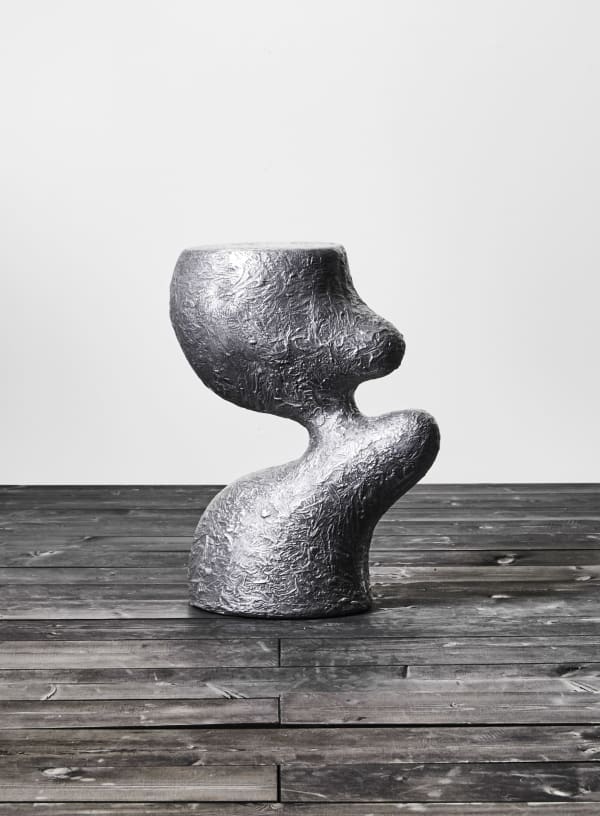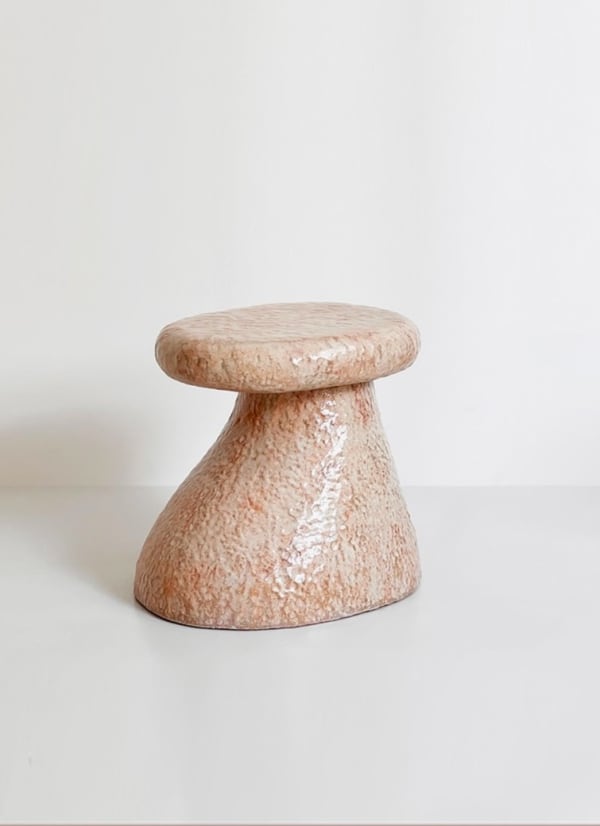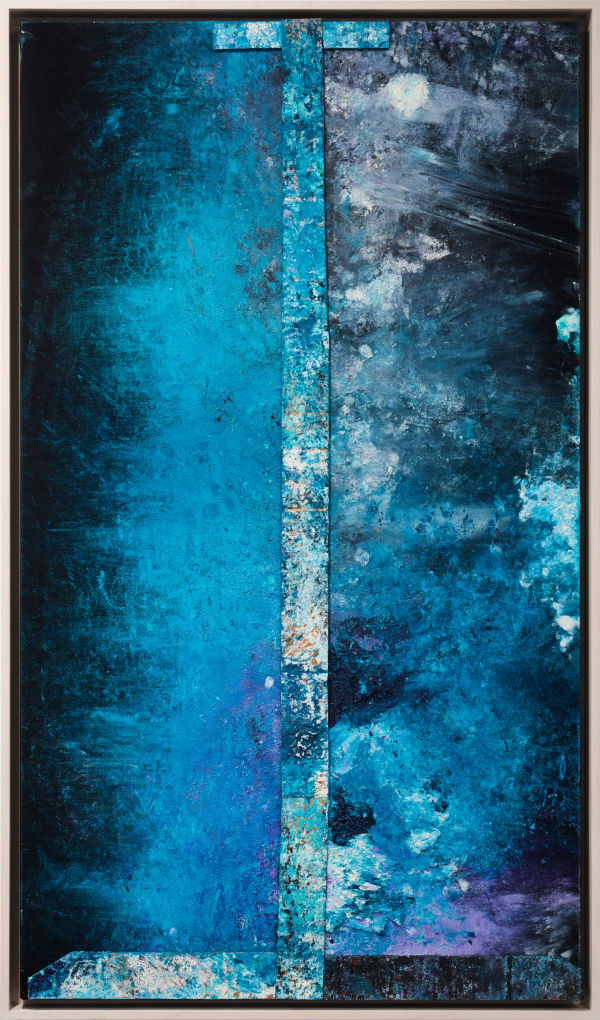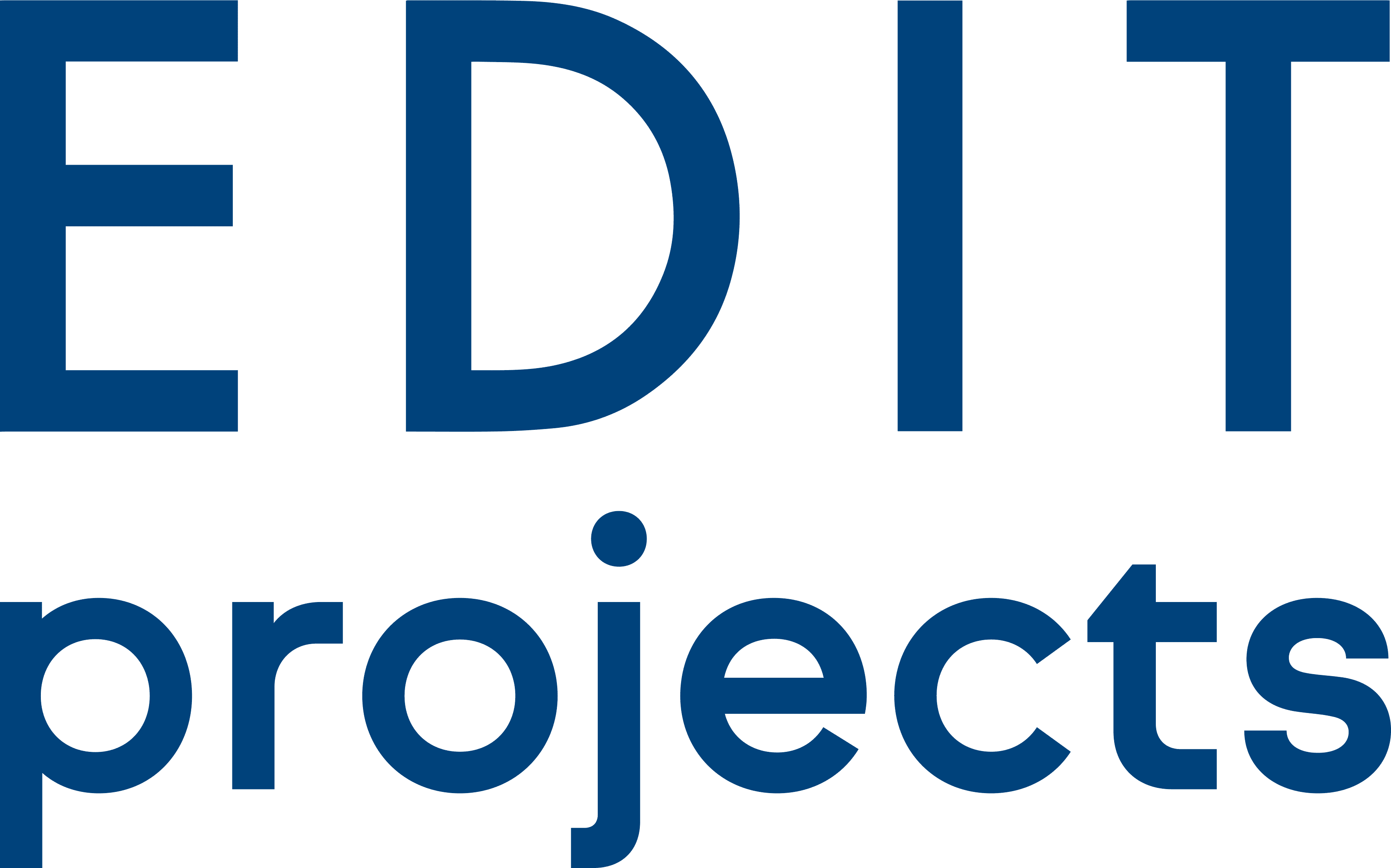-
-
About the Exhibition
에디트프로젝트는 2025년 3월 14일부터 5월 10일까지 스툴 컬렉션 'The Stool'을 선보인다. 이번 전시는 에디트프로젝트의 기획 하에 덴스크와의 협력으로 진행되며, 한국의 디자이너 김무열, 김윤환, 유남권과 덴마크 디자인 브랜드 칼 한센 앤 선(Carl Hansen & Søn), 루이스 폴센(Louis Poulsen), 프라마(FRAMA)의 작품으로 구성된다. 또한, 동시대 미술계에서 주목받는 스털링 루비(Sterling Ruby), 애런 존슨(Aaron Johnson), 세바스찬 블랙(Sebastian Black)의 회화 작품도 함께 전시되어 보다 확장된 시각적 경험을 제공한다.
이번 전시는 전통과 현대, 동양과 서양이 교차하는 지점에서 디자인이 시대와 사회를 어떻게 반영하는지 탐구한다. 스툴이라는 오브제를 통해 각 작품은 기능을 넘어 문화적 흐름과 정체성을 드러낸다. 덴마크 디자인은 오랜 역사적 기반 위에서 기능성과 미니멀리즘을 강조하며, 지속 가능하고 실용적인 미학을 추구한다. 반면, 한국의 디자이너들은 전통과 현대를 조화롭게 결합해 각자의 방식으로 시대적 맥락을 표현한다.
유남권 (b.1987)은 전통 옻칠 기법을 현대적으로 재해석한 작품으로 주목받고 있다. 그는 동양화와 가구 디자인을 전공했으며, 전라북도 무형문화재 박강용 명인에게 배운 기법을 바탕으로 ‘지태칠기’ 시리즈를 선보였다. 지태칠기는 한지 위에 옻칠을 여러 겹 쌓아 자연스럽고 독특한 질감을 만드는 옻칠 기법이다. 유남권은 전통 기법을 계승하면서도 동양화의 반수와 배접 기법을 활용해 옻의 깊이와 농담을 섬세하게 조율한다. 반수는 종이에 풀을 먹여 내구성을 높이는 기법이며, 배접은 종이를 여러 겹 붙여 강도를 보강하는 방식입니다. 그는 이 과정을 반복해 종이의 질감을 살리고 촉각적 특성을 극대화한다. 이를 통해 전통을 현대적으로 재해석하며, 자신만의 조형 언어를 구축하고 있다. 그의 작품은 2024 밀라노 한국공예전(2024,밀라노),서울공예박물관(2024, 서울), 선병국 가옥(2022, 충북), 예올x샤넬 프로젝트(2022, 서울), 국립한국박물관(2022, 서울) 등 다양한 전시와 프로젝트에서 소개되었으며, 활발한 활동을 이어가고 있다. 김윤환 (b.1987)은 자연에서 얻은 형상적 영감을 바탕으로 인간 내면의 흐름을 탐구한다. 그의 대표 시리즈 ‘Unintended’ 는 우연한 형태의 변화 속에서 자연스러운 미학과 작가의 정체성을 표현한다. 2017년 유럽 여행 중 가우디의 건축물과 르 코르뷔지에의 롱샴 성당에서 영감을 받아 비정형적인 형태를 연구하기 시작했으며, 특히 해삼의 변화무쌍한 형태와 회복력에서 모티브를 얻어 작품을 발전시켰다. 그의 작업 과정은 디지털 모델링, CNC 기계 작업, 수작업을 결합해 기계적 정밀성과 인간적 감성을 동시에 구현합니다. 이를 통해 ’자연스럽고 인위적이지 않은 아름다움‘을 추구하며, 감정의 변화와 회복 과정을 시각적으로 담아낸다. 김윤환 작가는 아트 바젤, 디자인 마이애미, 벨기에 컬렉터블 페어, PAD 런던 등 세계적인 무대에서 소개되며 활발한 활동을 이어가고 있다. 김무열 (b.1988)은 기억 속 이미지를 재구성하고 다양한 형상을 융합해 조형성과 서사가 결합된 독창적인 작업을 선보인다. 그의 작품 속 가구들은 익숙하면서도 명확히 정의되지 않은 형태로 표현되어, 친숙하면서도 낯선 감각을 불러일으킨다. 그는 도자를 매개로 모호한 형상을 구체화하며, 형태·색채·질감의 변화를 꾸준히 탐구한다. 특히, 가마 소성 과정에서 발생하는 균열, 유약의 흐름, 색상의 변화와 같은 예측할 수 없는 요소를 수용함으로써 이러한 우연성을 조형적 요소로 활용한다. 또한, 작가는 도자의 유기적 곡선과 질감이 나무나 금속과는 다른 감각적 경험을 제공한다는 점에 주목한다. 그는 가구와 도자를 결합해 도자의 조형적 역할을 확장하고 물질과 형태에 대한 실험을 지속해나간다. 이처럼 김무열의 작업은 형태와 의미가 유동하는 지점에 서 있으며, 예술과 일상, 계획과 우연, 물질성과 감각이 만나는 경계에서 현대 도예의 새로운 가능성을 탐색한다. 그는 도예를 조각적이고 공간적인 시각으로 접근하며, 그 경계를 확장해 나가며 동시대 미술의 방향을 제시한다.
덴마크의 디자인 브랜드 칼 한센 앤 선(Carl Hansen & Søn)은 한스 웨그너의 디자인 철학을 반영한 CH56 Bar Stool을 통해 미니멀리즘과 인체공학적 요소를 강조한다. 루이스 폴센(Louis Poulsen)의 PH 조명은 1950년대부터 북유럽 디자인의 상징으로 자리 잡았으며, 빛의 확산과 인간 중심의 디자인을 구현하는 혁신적인 철학을 지닌다. 프라마(FRAMA)는 2011년 설립된 브랜드로, 스칸디나비아 디자인의 전통적 가치를 현대적 감각으로 풀어낸다. 자연 소재와 따뜻한 감성을 결합해 실용성과 미학을 동시에 충족시키는 작품을 선보인다.
‘The Stool’은 단순한 가구를 넘어 디자인, 기능, 예술이 어떻게 상호작용하고 확장되는지를 보여준다. 각 작품은 시대적, 문화적 맥락 속에서 본질을 재해석하며, 작가들은 자신만의 조형 언어와 디자인 철학을 바탕으로 재료와 형태에 대한 독창적 해석을 제시한다. 이번 전시는 디자인의 경계를 확장하고 그, 그 다채로운 가능성을 재조명하는 기회가 될 것이다.
About the exhibition
EDIT Projects is pleased to present 'The Stool’ collection from March 14 to May 10, 2025. Curated by EDIT with support from Dansk, this exhibition features works by Korean designers Kim Muyeol, Kim Yunhwan, and Lyu Namgwon, alongside Danish design brands Carl Hansen & Søn, Louis Poulsen, and FRAMA. Additionally, paintings by Sterling Ruby, Aaron Johnson, and Sebastian Black, prominent figures in contemporary art, will be showcased, offering a broader visual experience.
This exhibition explores how design reflects time and society at the intersection of tradition and modernity, East and West. Through the object of the stool, each work transcends simple form and function to reveal cultural trends and identities. Danish design, built on a rich historical foundation, emphasizes functionality and minimalism while pursuing sustainable and practical aesthetics. In contrast, Korean designers harmoniously blend tradition and modernity, offering works that reflect the pulse of their times in their own unique ways.
Lyu Namgwon (b.1987, Korea) is recognized for his contemporary reinterpretation of traditional lacquer techniques. He studied Oriental painting and furniture design and developed the 'Jitaechilgi' series based on techniques learned from Master Park Kang-yong, a Jeollabuk-do Intangible Cultural Heritage artist. Jitaechilgi is a technique in which multiple layers of lacquer are applied to Hanji (Korean traditional paper), creating a natural and unique texture. While preserving traditional methods, Lyu incorporates Bansu and Baejeop, techniques from Oriental painting, to refine the depth and tonal variations of lacquer. Bansu involves treating paper with glue to enhance its durability, while Baejeop strengthens the material by layering multiple sheets of paper. Through this repetitive process, he enhances the texture and tactile qualities of the paper. By reinterpreting tradition in a modern context, he establishes his own distinctive formal language. His works have been showcased in various exhibitions and projects, including the 2024 Milan Korean Craft Exhibition (Milan, 2024), Seoul Museum of Craft Art (Seoul, 2024), Seon Byeong-guk House (Chungbuk, 2022), YÉOL × CHANEL Project (Seoul, 2022), and the National Museum of Korea (Seoul, 2022).
Kim Yunhwan (b.1987, Korea) explores the flow of human emotions through organic forms inspired by nature. His renowned series, 'Unintended' captures the essence of spontaneous transformations, expressing both a natural aesthetic and his artistic identity. During a trip to Europe in 2017, he was deeply inspired by Gaudí’s architecture and Le Corbusier’s Chapel of Notre Dame du Haut, which led him to explore organic, non-linear forms. In particular, he drew inspiration from the ever-changing shape and resilience of sea cucumbers, incorporating these qualities into his work. His creative process combines digital modeling, CNC machining, and handcrafting, achieving both mechanical precision and human sensitivity. Through this approach, he pursues a “natural and uncontrived beauty” while visually capturing the fluidity of emotions and the process of recovery. Kim’s work has been showcased on international major platforms, including Art Basel, Design Miami, Collectible Fair in Belgium, and PAD London, among others.
Kim Muyeol (b.1988, Korea) reconstructs images from memory, merging various forms to develop a distinctive artistic language where form and narrative intertwine. The furniture in his works appears familiar and undefined, evoking a sense of recognition and estrangement in the viewer. Through ceramics, he materializes ambiguous forms while exploring transformations in shape, color, and texture. Notably, he embraces the unpredictable elements that arise during the kiln-firing process—cracks, flowing glazes, and color shifts—integrating them as key sculptural components. He also highlights the organic curves and textures of ceramics, which offer a sensory experience distinct from wood or metal. By integrating ceramics with furniture, he expands the sculptural role of ceramics and persistently experiments with materiality and form. His work exists at the intersection where form and meaning remain fluid, exploring new possibilities in contemporary ceramics at the boundaries between art and everyday life, intention and chance, materiality and perception. Approaching ceramics from a sculptural and spatial perspective, he pushes its boundaries and presents new directions in contemporary art.
Carl Hansen & Søn, a Danish design brand, emphasizes minimalism and ergonomic elements with its CH56 Bar Stool, reflecting the design philosophy of Hans Wegner. Louis Poulsen's PH lighting, an icon of Nordic design since the 1950s, embodies an innovative philosophy focused on light diffusion and human-centered design. Founded in 2011, FRAMA represents a modern reinterpretation of Scandinavian design traditions, merging natural materials with warm, functional aesthetics that satisfy both practical and artistic demands.
'The Stool' goes beyond a simple piece of furniture; it demonstrates how design, function, and art interact and expand. Each piece reinterprets its essence within historical and cultural contexts, while the artists present original perspectives on materials and form based on their own formal language and design philosophy. This exhibition serves as an opportunity to push the boundaries of design and rediscover its diverse possibilities.
-
Featured works
-
About the Artist
유남권 (Lyu Namgwon, b. 1987, Korea)
서울 경기 에서 거주 및 작업 활동중
유남권은 전통 옻칠을 현대적으로 재해석하며, 옻을 단순한 마감재를 넘어 독창적인 도구로 활용한다. 동양화와 가구디자인을 전공한 그는 전라북도 무형문화재 13호 ‘옻칠장’ 박강용 명인에게 배운 기법을 바탕으로 ‘지태칠기' 시리즈를 선보이며 주목받았다. 그는 삼베, 플라스틱, 금속 등 다양한 소재에 옻칠을 적용하며, 그릇, 촛대, 스툴 등의 작품에서 새로운 기법과 색감을 시도하고 있다. 전통 옻칠은 바탕의 소지에 따라 목태칠기(나무), 금태칠기(금속), 도태칠기(도자), 지태칠기(종이) 등으로 구분된다. 이 중 지태칠기는 종이 위에 옻칠을 입히는 기법으로, 한지와 옻칠을 결합하여 자연스럽고 깊이 있는 질감을 만들어낸다. 유남권은 이를 통해 전통 기법을 현대적으로 해석하고, 현대적 해석을 더하고, 동양화 기법인 반수와 배접을 응용해 옻칠 작업에 새로운 생명력을 불어넣고 있다. 그의 작업은 목재에 여러 겹의 한지를 붙이고 옻칠을 한 후 건조하는 방식으로 진행된다. 금속이나 목재 위의 옻칠은 겹겹이 쌓이는 느낌을 주지만, 한지 위의 옻칠은 자연스럽게 스며들어 수묵화같은 질감을 만든다. 이렇게 여러 번 옻칠을 쌓아 완성된 지태칠기는 옻의 농담과 한지의 질감이 어우러져 기존 전통 지태칠기와는 다른 새로운 아름다움을 보여준다. 유남권은 2024 밀라노 한국공예전(2024,밀라노),서울공예박물관(2024, 서울), 선병국 가옥(2022, 충북), 예올x샤넬 프로젝트(2022, 서울), 국립한국박물관(2022, 서울) 등 다양한 전시와 프로젝트 에서 소개되었으며, 활발한 활동을 이어가고 있다.
Lyu Namgwon reinterprets traditional lacquerware in a contemporary way, utilizing lacquer not just as a finishing material but as a unique artistic tool. With a background in Oriental painting and furniture design, he gained recognition for his "Jitaechilgi" series, which reimagines the techniques he learned from master artisan Park Kang-yong, the 13th Intangible Cultural Heritage of Jeollabuk-do in lacquerware. He applies lacquer to a variety of materials, including hemp cloth, plastic, and metal, experimenting with new techniques and colors in his works, such as bowls, candlesticks, and stools. Traditional lacquerware is categorized based on the base material: Moktaechilgi (wood), Geumtaechilgi (metal), Dotaechilgi (ceramic), and Jitaechilgi (paper). Among these, Jitaechilgi involves applying lacquer to paper, creating a natural and deeply textured surface through the combination of hanji (Korean traditional paper) and lacquer. Yoo Nam-kwon modernizes this technique by incorporating methods from Oriental painting, such as the semi-water technique and backing method, breathing new life into lacquer art.
His process involves layering multiple sheets of hanji onto wood, applying lacquer, and allowing it to dry. While lacquer on metal or wood results in a built-up, layered effect, lacquer on hanji is absorbed naturally, creating textures reminiscent of ink wash paintings. Through repeated lacquering, Jitaechilgi achieves a rich interplay of lacquer’s shading and the paper’s organic texture, presenting a new aesthetic distinct from traditional Jitaechilgi. Lyu Namgwon's works have been showcased in various exhibitions and projects, including the 2024 Milan Korean Craft Exhibition (Milan, 2024), Seoul Museum of Craft Art (Seoul, 2024), Seon Byeong-guk House (Chungbuk, 2022), the Yeol x Chanel Project (Seoul, 2022), and the National Museum of Korea (Seoul, 2022).
김윤환 (Kim Yunhwan, b. 1987, Korea)
서울/경기 에서 거주 및 작업 활동중
김윤환은 자연에서 얻은 형상적 영감을 바탕으로 인간 내면의 흐름을 탐구한다. 그의 대표 시리즈 ‘Unintended’ 는 우연한 형태의 변화 속에서 자연스러운 미학과 작가의 정체성을 표현한다. 2017년 유럽 여행 중 가우디의 건축물과 르 코르뷔지에의 롱샴 성당에서 영감을 받아 비정형적인 형태를 연구하기 시작했으며, 특히 해삼의 변화무쌍한 형태와 회복력에서 모티브를 얻어 작품을 발전시켰다.
“2017년에 유럽으로 약 3달간 배낭여행을 다녀왔어요. 그때 봤던 가우디 성당과 카사 밀라, 카사 바트요가 뇌리에 오래도록 남았고, 작가로서의 명성을 키우려면 남들과 다른 차별성을 가져야 한다고 생각했어요. 한국으로 돌아와 제 안에 내재되어 있는 정체성을 찬찬히 풀어가기 시작했죠. 우연찮게 발견한 해삼을 통해 실질적 모티프를 얻었어요. 해삼은 형태가 변하지만 시간이 지나면 본래의 상태로 되돌아와요. 또 여러 번 잘라내도 다시 살아나는 복원력을 가졌죠. 이 특성이 사람의 감정과 닮아 있다는 생각이 들었어요. 누군가를 만나고 어떠한 사건에 의해서 느끼는 사람의 다양한 감정을 해삼의 형태에서 영감을 받아 작품으로 표현하고자 했어요.”
그의 작업 과정은 디지털 모델링, CNC 기계 작업, 수작업을 결합해 기계적 정밀성과 인간적 감성을 동시에 구현합니다. 이를 통해 ’자연스럽고 인위적이지 않은 아름다움‘을 추구하며, 감정의 변화와 회복 과정을 시각적으로 담아낸다. 김윤환은 아트 바젤, 디자인 마이애미, 벨기에 컬렉터블 페어, PAD 런던 등 국제적인 무대에서 그의 작품을 선보이며, 세계를 무대로 활발한 활동을 이어가고 있다.
Kim Yunhwan (b.1987, Korea) explores the flow of human emotions through organic forms inspired by nature. His renowned series, “Unintended,” captures the essence of spontaneous transformations, expressing both a natural aesthetic and his artistic identity. During a trip to Europe in 2017, he was deeply inspired by Gaudí’s architecture and Le Corbusier’s Chapel of Notre Dame du Haut, which led him to explore organic, non-linear forms. In particular, he drew inspiration from the ever-changing shape and resilience of sea cucumbers, incorporating these qualities into his work.
“In 2017, I embarked on a three-month backpacking journey through Europe. The Gaudí Cathedral, Casa Milà, and Casa Batlló left an indelible impression on me. It was then that I realized, to establish a distinct artistic identity, I needed to create something that set me apart. Upon returning to Korea, I began the process of unpacking my own sense of identity. During this introspective period, I unexpectedly discovered the sea cucumber, which became a key motif in my work. The sea cucumber constantly shifts its form, but over time, it always returns to its original state. Even when severed, it regenerates. This regenerative ability struck me as analogous to human emotions, which evolve yet remain resilient. I wanted to express the range of human emotions—whether from encountering someone new or experiencing transformative events—through the form of the sea cucumber.”
His creative process combines digital modeling, CNC machining, and handcrafting, achieving both mechanical precision and human sensitivity. Through this approach, he pursues a “natural and uncontrived beauty” while visually capturing the fluidity of emotions and the process of recovery. Kim’s work has been showcased on international major platforms, including Art Basel, Design Miami, Collectible Fair in Belgium, and PAD London, among others.
김무열 (Kim Muyeol, b.1988, Korea)
서울/경기 에서 거주 및 작업 활동중
김무열은 기억 속 이미지를 재구성하고 다양한 형상을 융합함으로써 조형성과 서사가 결합된 독창적인 작업을 선보인다. 그의 작품 속 가구들은 익숙하면서도 명확히 정의되지 않은 형태로 표현되어 관람자에게 친숙하면서도 낯선 감각을 불러일으킨다. 그는 도자를 매개로 모호한 형상을 구체화하며, 형태, 색채, 질감의 변화를 꾸준히 탐구한다. 특히, 가마 소성 과정에서 발생하는 균열, 유약의 흐름, 색상의 변화와 같은 예측할 수 없는 요소를 적극 수용함으로써, 이러한 우연성을 조형적 요소로 활용한다. 또한, 작가는 도자의 유기적 곡선과 질감이 나무나 금속과는 다른 감각적 경험을 제공한다는 점에 주목한다. 그는 가구와 도자 결합해 도자의 조형적 역할을 확장하고, 물질과 형태에 대한 실험을 지속적으로 이어간다.
작업 과정에서는 손자국과 제작의 흔적이 감춰지기 보다 오히려 강조된다. 이는 물질과 작가의 신체가 교감하는 과정을 드러내며, 단단한 도자에 유기적이고 촉각적인 요소를 더해 감상자와의 심리적 거리를 자연스럽게 좁힌다. 아울러, 작품이 특정한 의미나 기능에 고정되지 않고, 관람자의 경험에 따라 자유롭고 유연하게 해석되기를 지향한다. 이처럼 김무열의 작업은 형태와 의미가 유동하는 지점에 서 있으며, 예술과 일상, 계획과 우연, 물질성과 감각이 만나는 경계에서 현대 도예의 새로운 가능성을 탐구한다. 그는 도예를 조각적이고 공간적인 시각에서 접근하며, 그 경계를 확장해 나가며 동시대 미술의 방향을 제시한다.
Kim Muyeol reconstructs images from memory and merges diverse forms to create original works that combine sculptural quality with narrative. The furniture in his works appears familiar and undefined, evoking a sense of recognition and estrangement in the viewer. Through ceramics, he materializes ambiguous forms while exploring transformations in shape, color, and texture. Notably, he embraces the unpredictable elements that arise during the kiln-firing process—cracks, flowing glazes, and color shifts—integrating them as key sculptural components. He also highlights the organic curves and textures of ceramics, which offer a sensory experience distinct from wood or metal. By integrating ceramics with furniture, he expands the sculptural role of ceramics and persistently experiments with materiality and form.
In his process, fingerprints and traces of handwork are not concealed but emphasized, revealing the physical interaction between the artist and the material. Through the addition of organic and tactile qualities to solid ceramic forms, he aims to narrow the psychological distance between the work and the viewer. Furthermore, his works are not fixed to a singular meaning or function, but instead invite open-ended interpretation shaped by individual experience. In this way, Kim's work exists at the intersection where form and meaning remain fluid. It is within the boundaries where art meets everyday life, where intention meets accident, and where materiality meets sensation, that he explores new possibilities in contemporary ceramics. Approaching the ceramic medium from both sculptural and spatial perspectives, he expands its boundaries and suggests new directions for contemporary art.

















